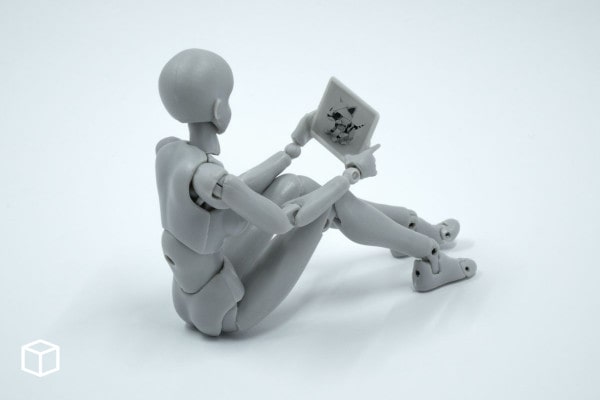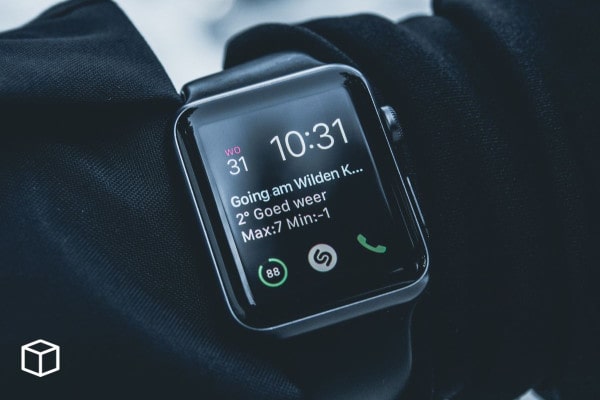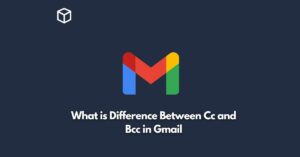Internet of Things or IoT is an internet of things that connects physical devices, vehicles, buildings and other objects to the internet.
What is Internet of Things?
The internet of things is a network of physical objects such as vehicles, home appliances and other items embedded with electronics, software, sensors, and connectivity which enables these objects to collect and exchange data.
The idea behind IoT is to improve efficiency in both business operations and end-user experience.

The internet of things allows objects to be sensed and controlled remotely across existing network infrastructure, creating opportunities for more direct integration of the physical world into computer-based systems, and resulting in improved efficiency, accuracy and economic benefit; derived from enhanced data collection, analysis, and action.
How the Internet of Things work?
The Internet of Things is a system that consists of objects or devices that are either personal or have the potential to be personally controlled.
This includes smart light bulbs, TVs, refrigerators, car alarms, fitness trackers and more.
Continuously powered sensors collect data about themselves and their surroundings, which is then transferred over the internet through either Wi-Fi (in the case of televisions) or cellular technology (in the case of smartphones).
IoT can be used in many ways; for example homes could eventually become self-aware with IoT devices tacking things like humidity levels and sound levels throughout an entire building.
What are some examples of IoT devices?
Some examples of IoT devices are:-
Thermostats – You can control your home’s temperature remotely or automate it to save energy
Wearable Tech – This device is worn by consumers for different purposes like measuring sports performance to monitoring energy levels in the body.

Dashboard Cameras – This device records the inside of your car through the windshield. If someone breaks in, you’ll have video evidence of who was there.
Baby Monitors – This device lets you see and hear what’s happening in your baby’s bedroom. You can even talk to them through video chat.
Burglar Alarms – You can monitor your home or business through a smartphone app. If there’s an intruder, the alarm will trigger.
What are the Major Components of IoT Ecosystem?
The Internet of Things (IoT) is a system of interrelated computing devices, mechanical, electronic, and software systems that are embedded in everyday objects to enable these things to connect with the Internet.
It is foreseeable that this ecosystem will be vastly different from the current one because of IoT-enabled objects. Furthermore, IoT is fundamentally changing what it means to be human.
The Internet of Everything (IoE) is a general term for connecting devices to the Internet, which allow information to be passed back and forth.
The IoE will connect people, processes, data and things using wired or wireless technology. The IoE enables us to take the next step towards making every day objects smarter to improve our lives.
What are the benefits of the Internet of Things?
The Internet of Things, or IoT, is a network of physical objects that are able to interact with the Internet.
People often associate the IoT with instruments like thermostats, refrigerators, and wearable tech, but it’s really everything that has the capability of connecting to the internet.
This means that any device with an on-off switch can potentially be part of the IoT. People are already using it for things like smart locks and home alarm systems.
In time, professionals from a wide variety of fields will begin implementing IoT into their work as well. For example, restaurant owners might use IoT to monitor stock levels on food products and automatically order more when something runs out.
Doctors could benefit from the ability to access patients’ medical records through an app they install on their private phones – the technology is already available, but it’s up to hospitals and other companies to adopt it.
The first step to making IoT devices widespread in everyday life is to make them more secure. Many of the security vulnerabilities that exist now are because people haven’t considered how easy it might be for others to hack into their systems.
What is the history of Internet of Things?
The first example of an internet-connected device was the webcams, which were developed for better video conferencing and to transmit live pictures.
The concept of IoT started with the idea that devices could be connected to one another through a network.
The first documented example of technology used in IoT came about in 1990 when a company called AMP (Advanced Metering Products) created a computerized system for electrical meters and automation to help reduce human error and make the process more efficient.
In 1993, AT&T announced it would provide national mobile data service through mobile phones. This allowed people to send and receive data like addresses, phone numbers, stock prices, etc… all from their phones.
Around the same time, the webcams were a new thing. People started using them to chat with their friends from around the world and send live pictures of themselves to one another through email/usenet.
In 1999, Kevin Ashton coined “Internet of Things” concept when working at Proctor & Gamble. This led him to launch a pilot that connected Gillette’s equipment to the Internet. These connections allowed P&G to monitor their manufacturing processes and the integrity of their products in real time.
The next step was taken by IBM with its’ development of RFID (radio-frequency identification) tags which they used to track goods as they went through logistics, allowing them to observe their status. Initially, RFID tags were used to track pallets of goods that were being transported, but they soon started being implemented in personal items as well. For example, RFID chips are now commonly found in pets for the purpose of identification.
In 2002, Kevin Ashton wrote an article about IoT where he stated that “the ‘Internet of Things’ has the potential to change the world, just as the Internet did. Maybe even more so” and that “If we had computers that knew everything there was to know about things—using data they gathered without any help from us—we would be able to track and count everything, and greatly reduce waste, loss and cost.”
In 2006, IBM researchers implemented a system that allowed companies to track and manage their power usage. This made it possible for them to turn off certain equipment when not in use or during peak hours, resulting in energy savings.
In 2009, Google released the first Android phone which later led to the release of IoT-related applications such as Google Now and IFTTT.
In 2014, Apple released the first version of its’ smartwatch. Since then, they went on to implement more features in their watches such as motion tracking and payment support for Apple Pay.
Around the same time (2014), Amazon launched a service called Alexa which allows users to use voice commands through their Echo/Alexa-enabled devices.
In 2016, the first versions of Google Home and Amazon’s Echo were released.
Nowadays, IoT is considered to be one of the biggest technology trends which continues to grow rapidly as more and more companies enter this market. The estimated number of connected devices increased from 10 billion in 2015 to 30 billion in 2020 and to over 75 billion by 2025. All signs indicate that this trend will continue as there is a lot of money and opportunity in it for investors.
In March 2018, the number of things connected through IoT surpassed the number of people online, at an estimated 12 billion devices versus the world population’s 7.6 billion.
What is the future of Internet of Things?
The future of IoT is in the growth of IoT-connected devices for use in smart cities, transportation systems, change in the architecture of data centers to accommodate large numbers of small scale IoT devices, and improvement in security.
There will be an increased focus on delivering higher bandwidth for this type of device in order to provide a better user experience.
The industry has a lot more work to do in order to improve the quality and reliability of these devices. There will also need to be more research done concerning how these types of devices will hold up in the long term.
Why is Internet of Things (IoT) so important?
The Internet of Things (IoT) is important because it’s the next big step in the Internet. The IoT connects devices like phones, cars, and refrigerators to the Internet.
It will connect these devices to each other, making them smarter. It will make our lives easier and better.
What technologies have made IoT possible?
There are many different types of technologies that allow for an IoT system to be possible.
These technologies include sensors, GPS, GSM/CDMA, Ethernet cable, ZigBee protocol, cloud computing infrastructure (IaaS or PaaS), and software.
Sensors are by far the most important part of the Internet of Things. Sensors can be used for many things, but their main use is to collect data.
A great example of this would be fitness trackers like Fitbit. These devices measure certain body signals (such as heart rate) and then send that data to a central hub where it can be analyzed and stored for future use.
This is a great example of the Internet of Things because this data can be tracked and analyzed to show daily, weekly, or even yearly progress over time. Also, since Fitbits are something most people wear on a daily basis, it provides an accurate representation of what is going on with that person’s body.
Applications of IoT
IoT provides a way to monitor and collect data from various sources. One of the most important things about IoT is the ability to monitor performance in ways that have not been possible before.
The use of IoT can be applied to a variety of different domains including automation, agriculture, commercial, industrial, and residential areas.
What industries can benefit from IoT?
Manufacturing industries can benefit the most from IoT.
Industries such as retail, utilities, and healthcare can also be greatly impacted by IoT. Grocery stores are able to optimize their inventory-management with predictive analytics while also adjusting its hours of operation to obtain more foot traffic during off-peak hours.
Homeowners are an example of how manufacturers use IoT in their industry because they can control what devices they want to turn on or off while they are away from home.
What is an example of an Internet of Things device?
An example of an Internet of Things device is smart home appliances that are equipped with sensors.
These sensors are used to sense the internal conditions of the devices and convey information on these conditions to external computers over Internet.
You Might Also Like
- What is Hadoop and How does Hadoop work?
- What is Django and How does it work?
- What is TensorFlow and How does it work?
- What is Scala and How does it work?
- What is GitHub and how does it work?
- What is Machine Learning and how does it work?
- What is Artificial Intelligence and how does it work?
- What is Open Source Software and how does it work?
- What is a Domain Name and how does it work?
- What is Big Data and how does it work?





